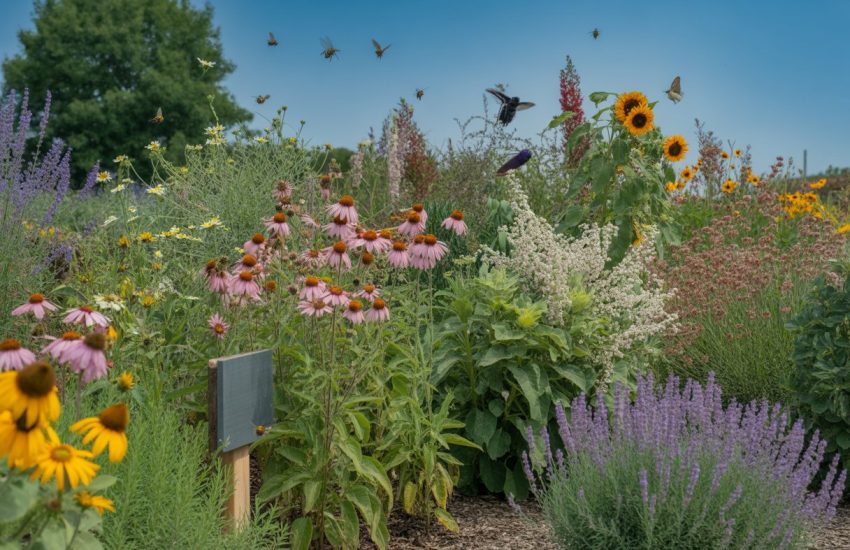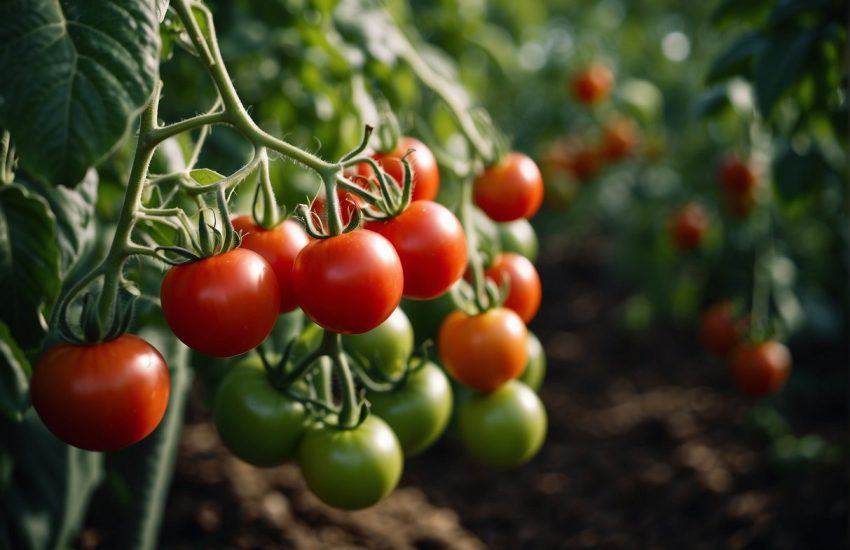16 Ground Cover Plants to Grow in Ohio
Are you considering adding a native ground cover to your yard? A ground cover could enhance your soil, reduce your slopeside erosion, or help you fend off unwanted pests and weeds. The following 16 plants thrive in hardiness zones five through six. They are excellent additions to yard spaces, landscape borders, walkways, and more. Check them out to see which ones would be a good match for your Ohio property!
Common Yarrow (Achillea millefolium)
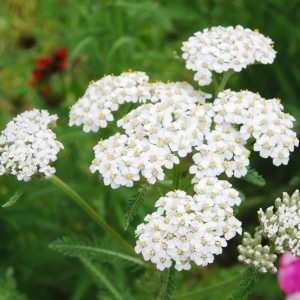
This herbaceous perennial grows both vertically and horizontally. It spreads quickly through underground rhizomes. The plant’s rapid and aggressive growth is not always noticeable above the surface. As such, we recommend that you plant yours near walkways, borders, and other restrictive landscaping elements.
Common yarrow develops fern-like foliage in the spring. Its feathery leaves serve as a backdrop for large clusters of flowers. The blossoms are usually yellow. However, pink, red, and white varieties are also available. This hardy plant is known to attract a wide variety of pollinators. However, its most common and appreciated visitors are native butterflies.
Common yarrow also requires little to no ongoing maintenance. When left to grow unchecked, it can become rather weedy. Plant your yarrow in a spot with ample sunlight and well-draining soil. Common yarrow thrives in dry conditions. It can tolerate drought. Mature plants are typically 3 to 4 feet tall and 3 to 4 feet wide. The fast-expanding clusters should be thinned every two to three years.
Sweet Woodruff (Galium odoratum)
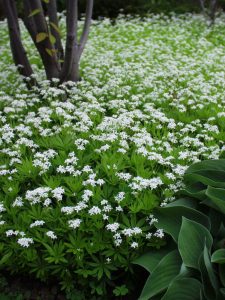
Sweet Woodruff (Galium odoratum) is a fast-spreading ground cover that thrives in shady conditions. Sweet woodruff is naturalized in parts of the United States. However, it is actually native to Asia and Europe. Its white flowers and star-shaped leaves make excellent additions to most gardens and landscapes.
Sweet woodruff is your classic runner plant. Plant it along edging and borders to ensure it does not get out of control.
Bearberry (Arctostaphylos uva-ursi)
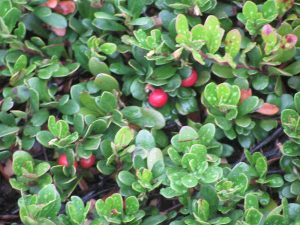
Bearberry is a low-lying shrub with oval-shaped leaves and pink and white flowers. When the flowers fade, they give way to the plant’s small red berries. The edible fruits are adored by a wide range of animals. As their name suggests, they’re a favorite of bears and other berry-eating mammals!
This enticing shrub is often used in landscape borders and rock gardens. It mats easily. A single patch can grow to be over 3 feet wide. The stunted thickets often reduce soil erosion. They can be used in place of grass and other basic lawn features.
The fragrant flower’s bell-shaped petals tend to attract all sorts of pollinators. These decorative blossoms appear in late spring. Most stick around for a few weeks. They are usually followed by a plentiful harvest of red berries. The foliage sticks around all year long.
Bearberry should be propagated from cuttings or rooted runners.
Whorled Tickseed (Coreopsis Verticillata)
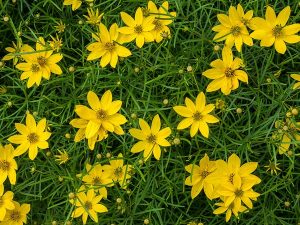
Whorled tickseed, or whorled coreopsis, is a member of the aster family that grows well in Ohio. This perennial herb produces thread-like leaves and yellow flowers. It spreads via rhizome and can do so quite quickly. Mature mats typically measure 1 to 3 feet in diameter.
Whorled tickseed grows best in dry soil and partial sun. It has a high drought tolerance.
This popular ground cover’s seeds are usually consumed by many native birds. Its foliage and blossoms make excellent additions to landscape borders and flower patches.
Eastern Teaberry (Gaultheria Procumbens)
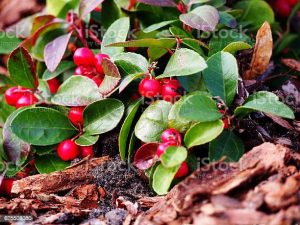
Eastern teaberry is another attractive ground cover that grows wild in Ohio’s swamps and wetlands. The plant boasts dark green foliage and bright red berries. In some ways, it resembles the holly plant. The shrub also produces greenish-white flowers. These bloom in summer and do not last long.
Plant this attractive shrub in a spot that receives full sun. Winterberry thrives in moist soil. It can even be grown in standing water. Most mature winterberry plants are at least 7 inches tall and 2 feet wide. Multiple shrubs typically grow from a single underground root system.
Wild ginger (Asarum canadense)
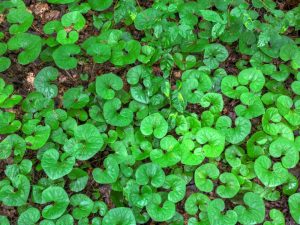
wild ginger is a perennial ground cover that creeps and crawls over compacted soil, brick, and stone. We adore this plant’s heart-shaped leaves and funnel-shaped flowers. The blooms appear in mid to late spring. During their short blooming window, they are pollinated by ants and other small insects.
A single teaberry plant can grow to be 6 to 10 inches tall and 12 to 24 inches wide.
Wild ginger is a fast spreader, as it grows via underground rhizomes. As such, we recommend that you place yours alongside large open borders and other areas with room for growth. Plants should be propagated 12 to 24 inches apart from one another. Teaberry plants can also be propagated in containers and raised beds.
Woodland aster (Eurybia divaricata)
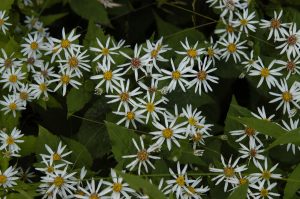
This fast-growing aster variety sprouts an abundance of daisy-like flowers. The blossoms have small white flowers and bright yellow centers. They typically appear in late summer and last for a few weeks. This low-lying aster variety does not typically grow to be anywhere more than 2 to 4 feet in height.
Woodland aster prefers partial shade and well-draining soil. It grows well in hardiness zones four through nine. It’s also a preferred species of many native pollinators. It’s a host plant for over 112 species of moths and butterflies.
Christmas fern (Polystichum acrostichoides)
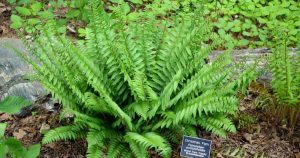
This bright green fern sprouts from a small rootstock. It can grow to be anywhere from 1 to 2 feet in height. Each rootstock sprouts dozens of leafy arms. Some people use the Christmas fern’s leaves for herbal remedies.
This ornamental ground cover thrives in full shade. However, it can tolerate some sunlight. Plant your Christmas fern during springtime. It pairs well with low-lying flowers and foliage. Since it remains green all year long, it’s an excellent addition to walkways and borders.
Solomon’s seal (Polygonatum biflorum)
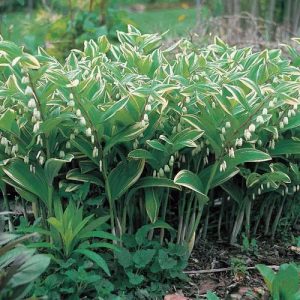
Small Solomon’s seal is a lovely ground cover that’s native to parts of eastern North America. This hardy plant produces fern-like clusters of leaves and drippy white flowers. The foliage and stems grow upright. However, they’re typically no longer than 4 inches at full maturity.
Common varieties include variegatum, prince charming, and slender stalk.
Plantain-leaved sedge (Carex plantaginea)
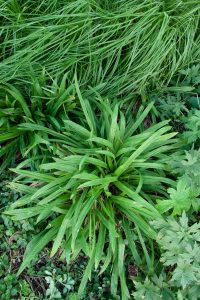
Plantain-leaved sedge is a flowering perennial that is pollinated by wind. It blooms in mid-spring. It produces ribbon-like green leaves that arise from crown-like clusters. Its purple and white flowers grow from the tips of leafless stems. The plant typically maxes out at 1 foot. Its height makes it an excellent pairing for even stubbier ground covers.
Plantain-leaved sedge should be planted in well-draining soil and partial shade.
Creeping phlox (Phlox stolonifera)
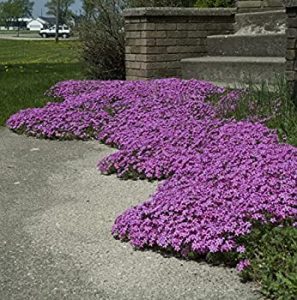
Creeping phlox is a low-lying perennial that produces thickets of light purple flowers. It’s typically planted along rock gardens, stone walls, retaining walls, and other landscape borders. The flowers are small and fragrant. They typically bloom in late May. Their sweet smell will bring all sorts of pollinators to your yard. While the blooms do not last especially long, the leaves stay green for several months.
Trim your phlox to keep it small or let it expand outward. This flowering mat will quickly engulf your grass if you let it. Its minute demands for water and nutrients make it an excellent alternative to traditional lawn options.
Virginia creeper (Parthenocissus quinquefolia)
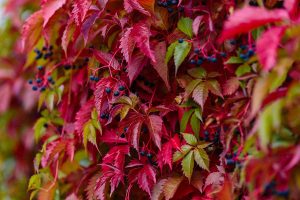
Virginia creeper, or Parthenocissus quinquefolia, is an aggressive ground cover and climbing vine that does well in hardiness zones three through 10. This impressive perennial vine can grow 30 to 50 feet in a single season. It produces lovely white flowers and dark green foliage. It’s relatively low-maintenance.
Virginia creeper spreads quickly and will adhere itself to walls, trees, and other structures. Its sticky tendrils make it very difficult to remove. As such, we recommend you train and trim this green beast to ensure it does not creep beyond your targeted boundaries.
Virginia creeper’s ability to grow on sloped surfaces makes it an excellent erosion preventative. Since it can grow both horizontally and vertically, we consider it to be quite versatile.
Allegheny spurge (Pachysandra procumbens)

Allegheny spurge is a low-lying perennial that spreads from rhizomes. This plant produces a mat of toothy green leaves and fragrant white flowers. It blooms in early spring.
Allegheny spurge is a semi-evergreen that continues to produce new shoots throughout the year. As new growth emerges, old growth shades away. Most mature plants are no bigger than 9 inches in height and 1 foot in diameter.
This ornament plant thrives in shady areas. It grows slowly and does not become matted. Allegheny spurge closely resembles Japanese pachysandra. However, it is a much more ecologically sound option for Ohio yards and gardens.
Alumroot (Heuchera villosa)

Alumroot, or coral bells, is a leafy perennial that grows from root crowns. It has purple stalks, heart-shaped green leaves, slender stems, and bell-shaped flowers. The petals are typically pink and white. This species thrives in moist soil and complete shade.
There are several species of alumroot. Most are native to the area from Ohio to Alabama. Common varieties include palace purple, Dale’s strain, and bronze wave.
Muskingum sedge (Carex muskingumensis)
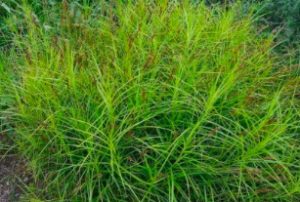
Muskingum sedge is a perennial sedge that can grow to be 2 to 3 feet tall. It spreads slowly via root rhizomes and self-seeding. Muskingum sedge does best in moist soil and full sun. It can even be grown in standing water.
This perennial is often used as a landscaping plant. We recommend that you propagate yours in a shady area that does not receive a lot of traffic. Sedge can be walked on, though it is nowhere as tough as ordinary grasses.
Muskingum sedge was named after Ohio’s Muskingum River. It is a host plant for over 30 native moths and butterflies.
Pennsylvania sedge (Carex pensylvanica)
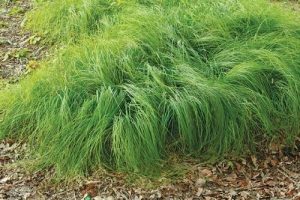
Pennsylvania sedge is another grass-like ground cover that has become a popular lawn replacement. This decorative plant blooms between May and July. It’s a hardy perennial that grows throughout most parts of eastern and central North America. It thrives in USDA plant hardiness zones three through eight.
Carex pensylvanica’s grass-like stalks can grow to be up to 12 inches tall. The crown-like bases typically measure 1 to 3 feet in diameter. They produce clusters of brown seeds. These are spread by the wind and birds. The light green foliage turns brown in the fall.
Keep in mind that Pennsylvania sedge tends to creep. Most varieties grow 3 to 8 inches in a year. Plant yours in an area that receives a good mix of direct sun and shade throughout the day. Keep in mind that Pennsylvania sedge resists most pests and is not a preferred meal for deer or rabbits.
Tips for Planting Ground Covers
Ground cover has become an increasingly popular alternative to grass. Here are a few do’s and don’t you should consider before you propagate your own. This hardy perennial grows throughout most parts of eastern and central North America. It does best in hardiness zones three through eight.
Carex pensylvanica’s grass-like stalks can grow to be up to 12 inches tall. The crown-like bases typically measure 1 to 3 feet in diameter. They produce clusters of brown seeds that are spread by the wind and native birds. The light green foliage turns light brown in the fall.
Avoid Invasive Species Many local nurseries do an excellent job of restricting the sale of invasive species. However, many invasive ground cover plants are still sold as garden ornamentals. Check the Ohio Invasive Plants Council’s list of invasive plants before you select new plants. Commonly sold invasive species include English ivy, Chinese wisteria, and burning bush.
Beware of Spreading Many ground cover plants grow by way of underground rhizomes. These plants typically reproduce very fast and may even be capable of overtaking entire areas. Others, like vines, are capable of generating both horizontal and vertical growth.
Familiarize yourself with your chosen plants’ expected growth rates and pruning preferences. Some plants grow up and out. Meanwhile, others remain tightly matted or bushy.
Calling All Pollinators Choose ground covers that will attract and sustain a wide variety of native pollinators. You’ll be doing yourself and your neighbors a big favor!

